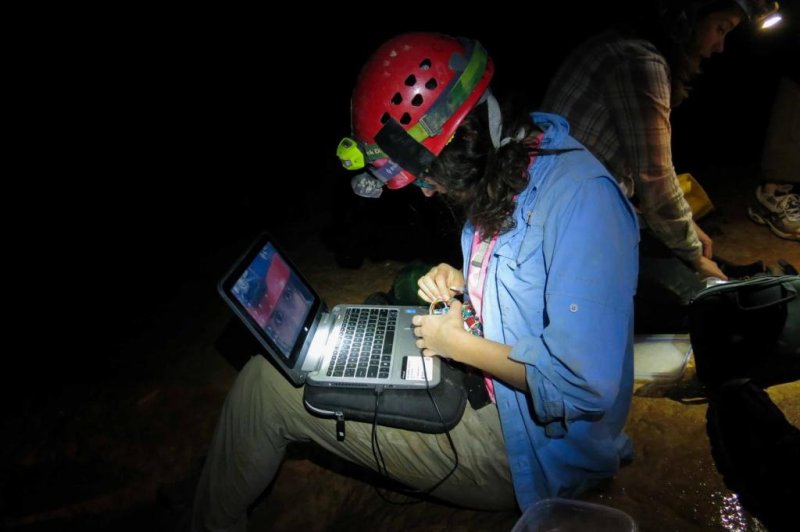Ph.D. student Elli Ronay analyzes mineral concentrations in stalagmite in Mawmluh Cave in Northeast India. Photo by Jessica Oster/Vanderbilt University
March 25 (UPI) -- Analysis of a stalagmite in one of the rainiest places on the planet has revealed an unexpected link between winter precipitation totals in northeast India and climatic conditions in the Pacific.
Roughly 1.5 billion people in India rely on the monsoons for their water. Sometimes, the monsoons disappoint. Winter rains can alleviate drought conditions in the wake of a weak monsoon season. Conversely, especially intense monsoons can trigger deadly flooding.
To better understand the region's precipitation variability, scientists looked to the stalagmites of India's Mawmluh Cave in the northeastern state of Meghalaya.
Most surveys of Mawmluh stalagmites have focused on the record of the region's rainy season precipitation totals. Researchers at Vanderbilt University decided to take a closer look at the geochemical signatures left by the region's dry season.
"Counterintuitively, air and water circulation in caves can cause, and even favor, stalagmite growth in the dry season, leading to unexpected effects in paleoclimate records," Elli Ronay, a doctoral student in earth and environmental sciences at Vanderbilt, said in a news release.
Analysis of trace element compositions in stalagmites growth allowed scientists to better understand pattern changes in the local hydrological cycle. Trace element concentrations -- specifically magnesium and calcium -- were revealed to be more closely tied to dry season rainfall than annual precipitation totals.
The discovery, detailed in the journal Scientific Reports, will allow scientists to more precisely retrace seasonal climate variability and draw connections between broader climatic conditions and region and local precipitation patterns.
In the future, scientists could use stalagmite analysis to predict droughts and floods.
"Our work demonstrates the importance of considering non-monsoon season rainfall when interpreting speleothem paleoclimate records and suggests that trace elements could provide insight into periods of enhanced dry season infiltration in monsoonal climates," researchers wrote.















